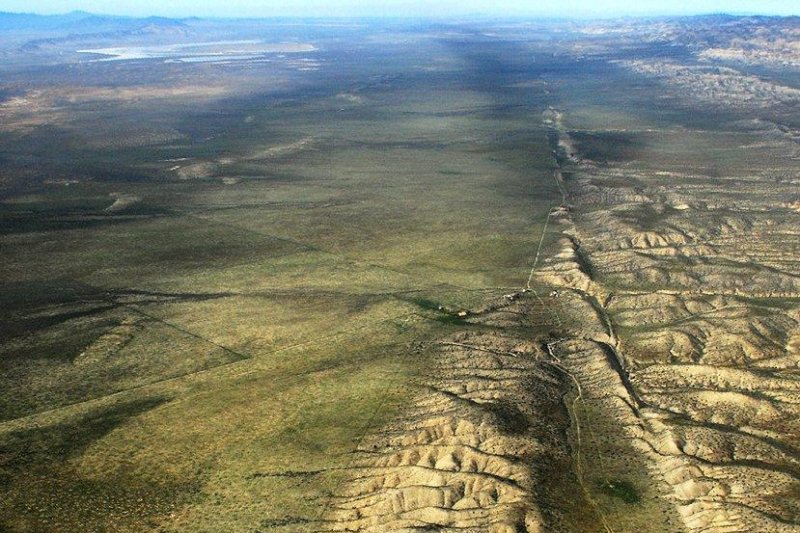New research could increase warning time for earthquakes with a magnitude of 7 or greater, like the massive of earthquakes previously produced by the San Andreas fault system. Photo by John Wiley/
Wikimedia Commons
May 29 (UPI) -- Geologists have found a possible early signature of massive earthquakes. New research suggests the telltale seismic pattern shows up between 10 seconds and 15 seconds into a seismic event.
Scientists discovered the warning sign after analyzing GPS records of peak ground displacement during dozens of earthquakes. The analysis of several GPS databases revealed a point in time when the beginnings of an earthquake takes the form of a "slip pulse," the mechanical functions of which scale with magnitude.
The discovery, published this week in the journal Science Advances, allowed scientists to differentiate between small- to medium-sized earthquakes and large to extra-large quakes.
"To me, the surprise was that the pattern was so consistent," Diego Melgar, a professor of earth sciences at the University of Oregon, said in a news release. "These databases are made different ways, so it was really nice to see similar patterns across them."
Researchers identified the displacement acceleration signature between 10 seconds to 20 seconds into the beginnings of 12 major earthquakes occurring between 2003 and 2016.
Though GPS instruments aren't regularly used for earthquake warning systems, they are already present along many land-based faults around the world. GPS instruments are positioned along several fault lines connected to the massive Cascadia subduction zone located off the coast of the Pacific Northwest.
"We can do a lot with GPS stations on land along the coasts of Oregon and Washington, but it comes with a delay," Melgar said. "As an earthquake starts to move, it would take some time for information about the motion of the fault to reach coastal stations. That delay would impact when a warning could be issued. People on the coast would get no warning because they are in a blind zone."
Melgar and other geologists in both the United States and Japan are currently considering innovative ways to monitor fault movements on the seafloor. An earlier study by Melgar determined such data could add an additional 20 minutes of warning time for a possible tsunami.















